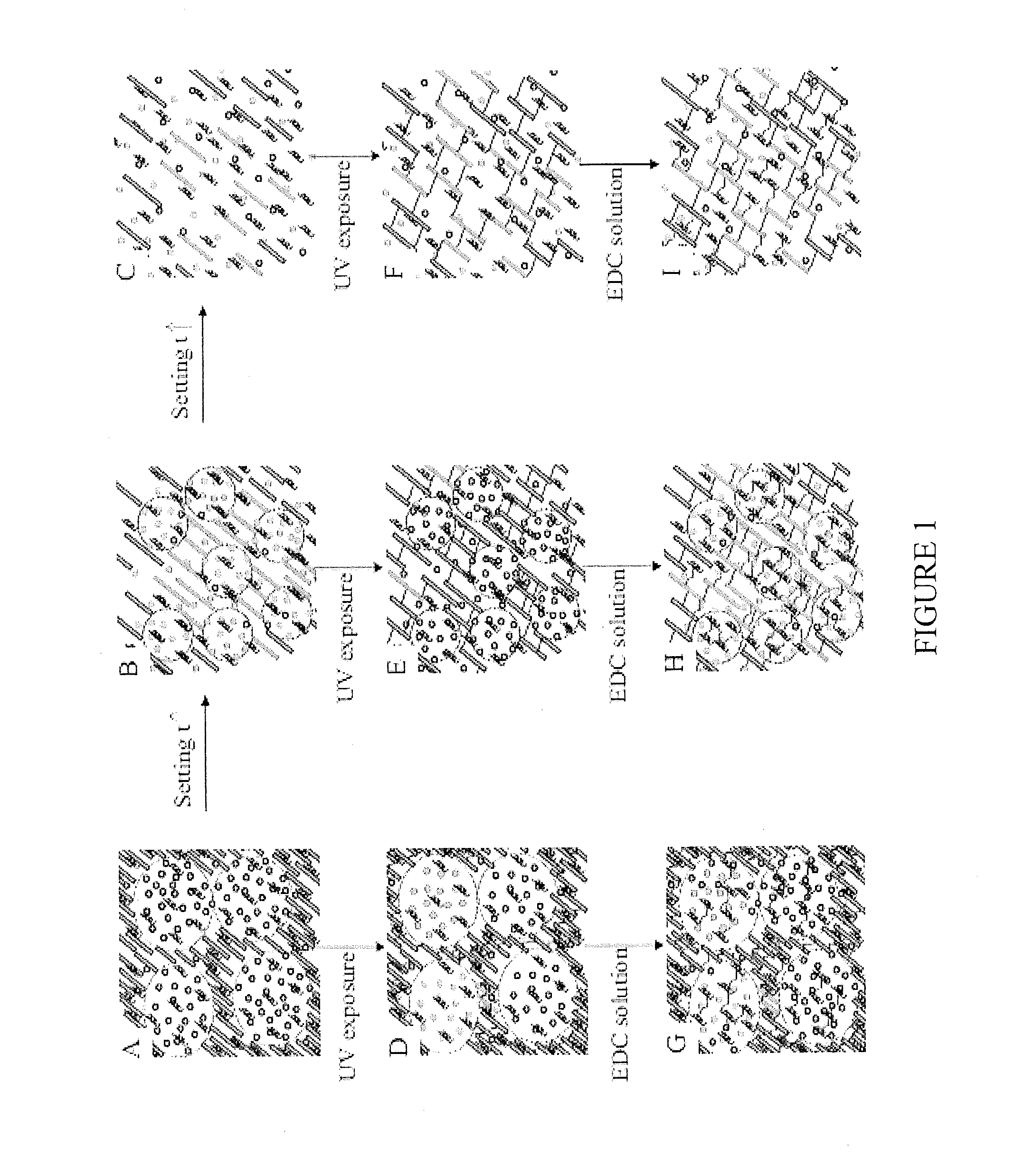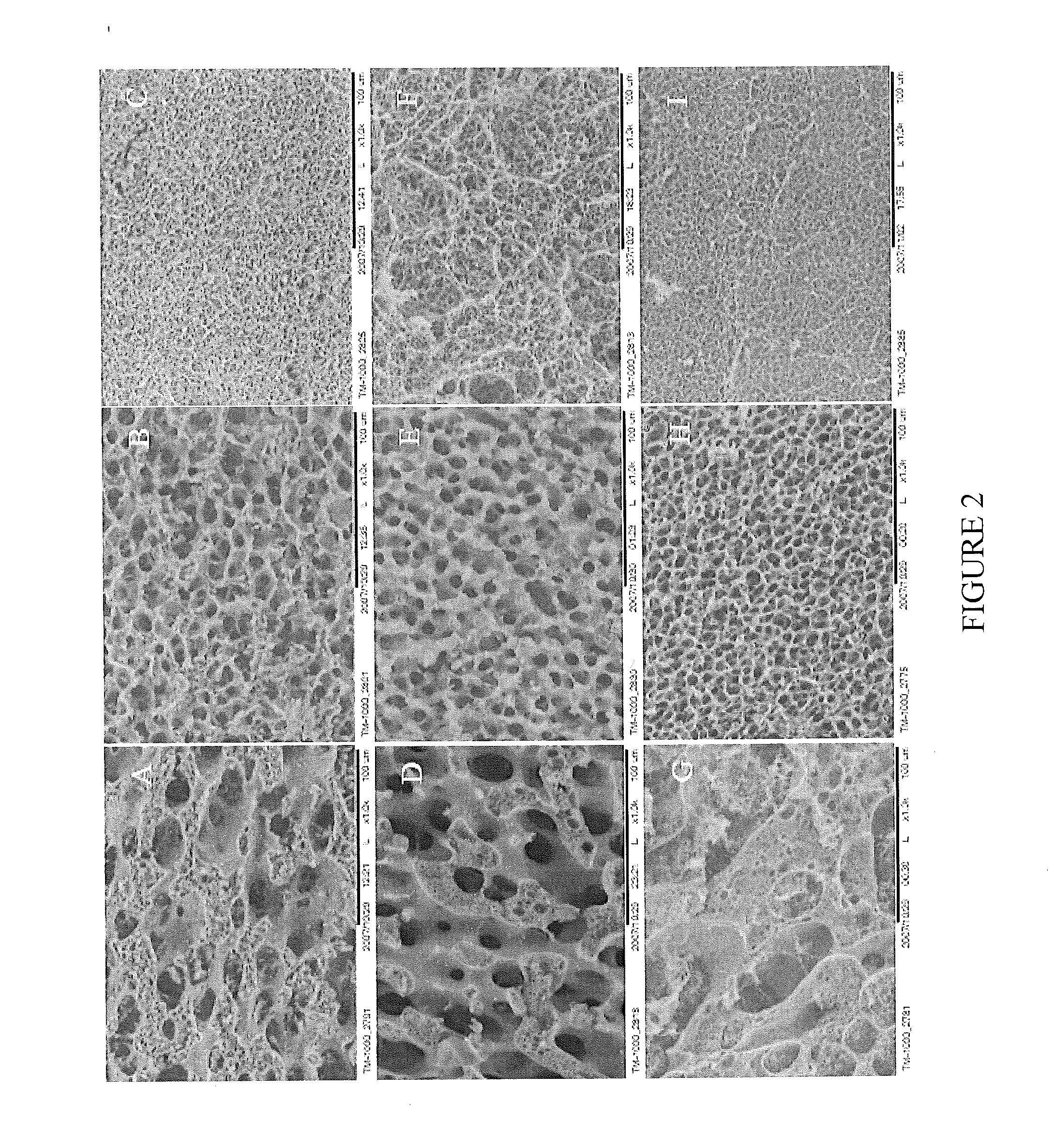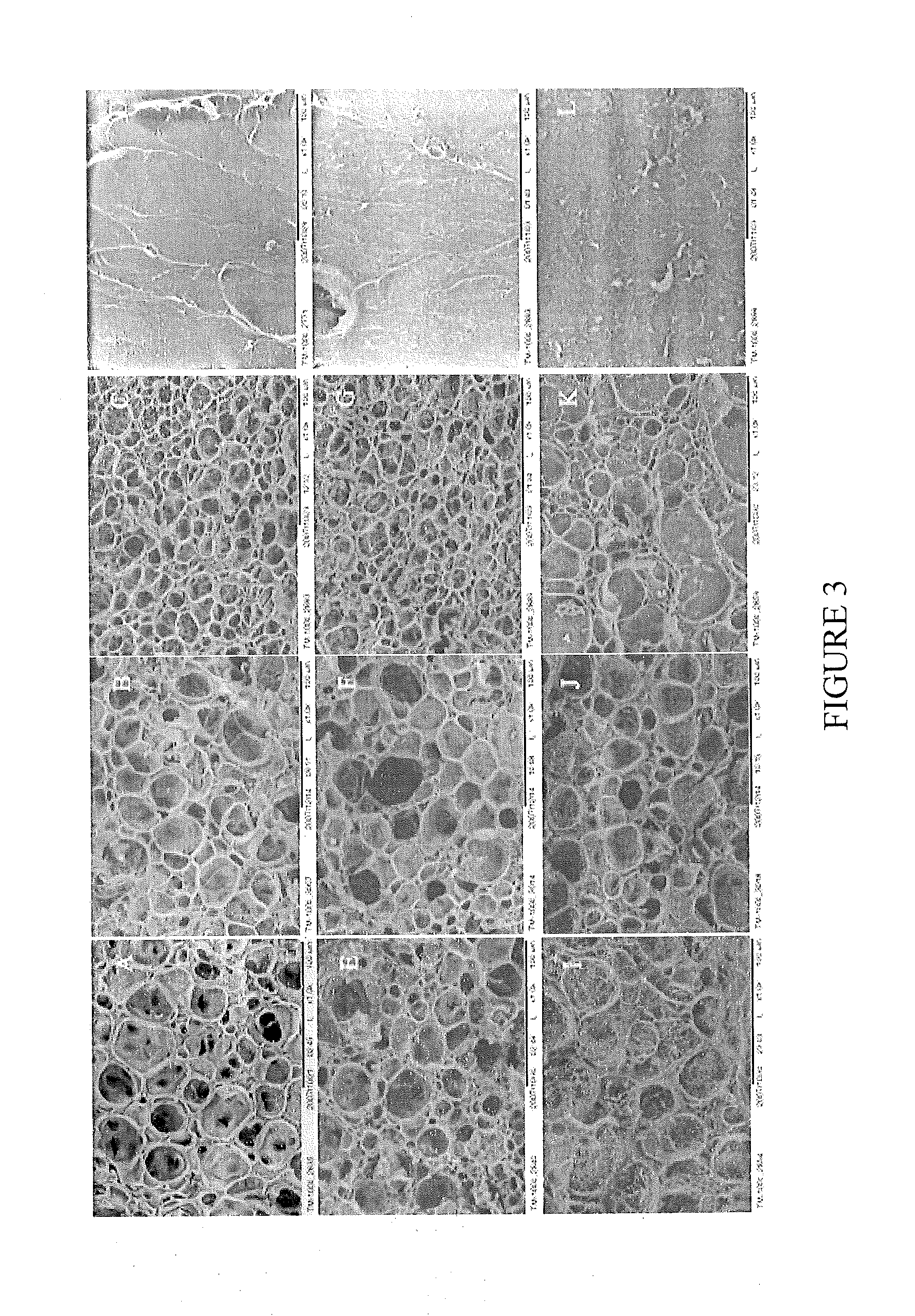Regeneration of tissue without cell transplantation
a tissue and cell technology, applied in the direction of prosthesis, drug composition, peptides, etc., can solve the problems of inability to repair the joint, and inability to treat the underlying disease,
- Summary
- Abstract
- Description
- Claims
- Application Information
AI Technical Summary
Benefits of technology
Problems solved by technology
Method used
Image
Examples
example 1
Scaffold Preparation
[0112]Chemically modified photocurable chitosan was synthesized according to the method described previously23. Briefly, 1 g chitosan was dissolved into methanesulfonic acid while constantly stirring for 25 minutes, followed by dropwise addition of a mixture of 1.1 g benzoyl chloride and 1.227 g methacryloyl chloride. The solution was kept at room temperature with stirring for another 30 minutes before it was added dropwise into an aqueous solution of ammonium hydroxide (100 ml 5 n ammonium hydroxide solution+600 ml DI water). The precipitate was filtered and washed 10 times with DI water to remove the reagent and solvent residues. Finally, the product was dried in vacuum over P2O5 for 2 days. The resulting chitosan has a 0.85 degree of deacetylation, a 0.4 graft degree of benzoic groups, and a 0.93 graft degree of methacrylate groups, as determined by 1H NMR spectroscopy23.
[0113]For gelatin-chitosan (Gtn-Cht) scaffold fabrication, 2 g gelatin was dissolved into ...
example 2
Synovial MSC Isolation, Culture, and Characterization
[0130]Synovial mesenchymal cells (SMSCs) were isolated from synovial membrane in the rabbit knee. Multipotency of the expanded synovial cells was assessed using standard in vitro differentiation assays for chondrogenesis, osteogenesis, and adipogenesis54 (FIG. 10). Limiting dilution assays were used to estimate a colony forming unit efficiency range of 1:13 to 1:52 and an alkaline phosphatase expression range of 1:26 to 1:413. The cell surface antigen profile of passage 2 cultures was investigated with a preliminary panel of monoclonal antibodies to CD14 (macrophage marker), CD44 (hyaluronin receptor), and CD90 (Thy-1) (SeroTech) (FIG. 11). Cell viability was 70.1% (FacsCalibur flow cytometer, CellQuest Pro software both Becton Dickinson). The cells were positive for CD44 and CD90 and negative for CD14. These markers are part of a more extensive panel for MSC antigen expression where CD44 and CD90 are considered important positive...
example 3
Cross-Linked Chitosan-Gelatin Elastic Scaffold with Biomolecule Delivery
[0131]Highly elastic scaffolds from the natural polymers, chitosan and gelatin, were prepared as described above. Both the chitosan and gelatin were chemically modified to enable polymerization when exposed to light. Because chitosan is positively charged and gelatin is a polyampholyte with both negatively charged and positively charged patches, chitosan and gelatin interact electrostatically, leading to a transition from segregative phase separation to the mixing state. This transition enables controlled formation of a 3D porous structure without using porogens. By varying the chitosan-to-gelatin ratio, setting time, and gelatin crosslinking, 3D porous hybrid scaffolds can be achieved with tunable microstructures across the nano, micro, and macro length scales (FIG. 12). The scaffolds exhibit superior elasticity that has not been previously achieved in any other natural biopolymers except elastin. In vitro cult...
PUM
| Property | Measurement | Unit |
|---|---|---|
| temperature | aaaaa | aaaaa |
| setting time | aaaaa | aaaaa |
| setting time | aaaaa | aaaaa |
Abstract
Description
Claims
Application Information
 Login to View More
Login to View More - R&D
- Intellectual Property
- Life Sciences
- Materials
- Tech Scout
- Unparalleled Data Quality
- Higher Quality Content
- 60% Fewer Hallucinations
Browse by: Latest US Patents, China's latest patents, Technical Efficacy Thesaurus, Application Domain, Technology Topic, Popular Technical Reports.
© 2025 PatSnap. All rights reserved.Legal|Privacy policy|Modern Slavery Act Transparency Statement|Sitemap|About US| Contact US: help@patsnap.com



